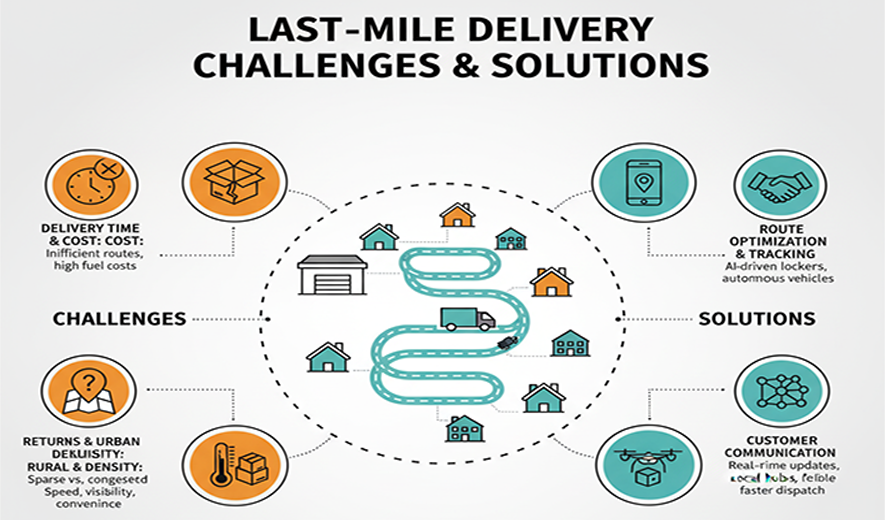
Last-mile Delivery Challenges & Solutions
Last-mile delivery, the final leg of a product's journey from a distribution center to the customer's doorstep, is often the most complex and expensive part of the supply chain. While it is crucial for customer satisfaction, it presents unique challenges that require innovative and strategic solutions.
High operational costs
Last-mile delivery can account for over 50% of the total shipping cost. Several factors contribute to this, including:
- Inefficient routing: Manually planning routes for numerous, scattered delivery points is inefficient, leading to increased fuel consumption, labor costs, and longer delivery times.
- High fuel and labor expenses: Delivery vehicles making frequent stops and starts, especially in congested urban areas, consume more fuel and increase maintenance costs.
- Failed deliveries: If a customer is unavailable, the delivery fails. This incurs additional costs for redelivery attempts and reduces driver productivity.
Growing customer expectations
Today's consumers expect fast, flexible, and transparent delivery services, influenced by major e-commerce players.
- Same-day and next-day delivery: What was once a premium service is now a standard expectation for many customers, putting immense pressure on logistics providers.
- Flexible delivery options: Customers often want the ability to choose specific delivery time slots or have packages delivered to alternative locations, such as lockers or local stores.
- Real-time tracking and communication: A lack of visibility into the delivery process can lead to anxiety and frustration for customers. They expect up-to-the-minute updates on their order's status.
Logistical and environmental issues
Last-mile operations face several on-the-ground complications.
- Traffic congestion and urban density: Navigating densely populated cities with heavy traffic and limited parking can cause significant delays and reduce the number of deliveries a driver can complete.
- Inaccurate address data: Incorrect or incomplete addresses, especially in areas with non-standardized systems, can lead to failed deliveries and wasted time.
- Environmental impact: The frequent travel and inefficient routes of delivery vehicles contribute to carbon emissions and urban pollution, an increasing concern for consumers and regulators.
- Seasonal demand fluctuations: Peak seasons, such as holidays, cause a surge in order volume that can overwhelm delivery systems and strain resources.
